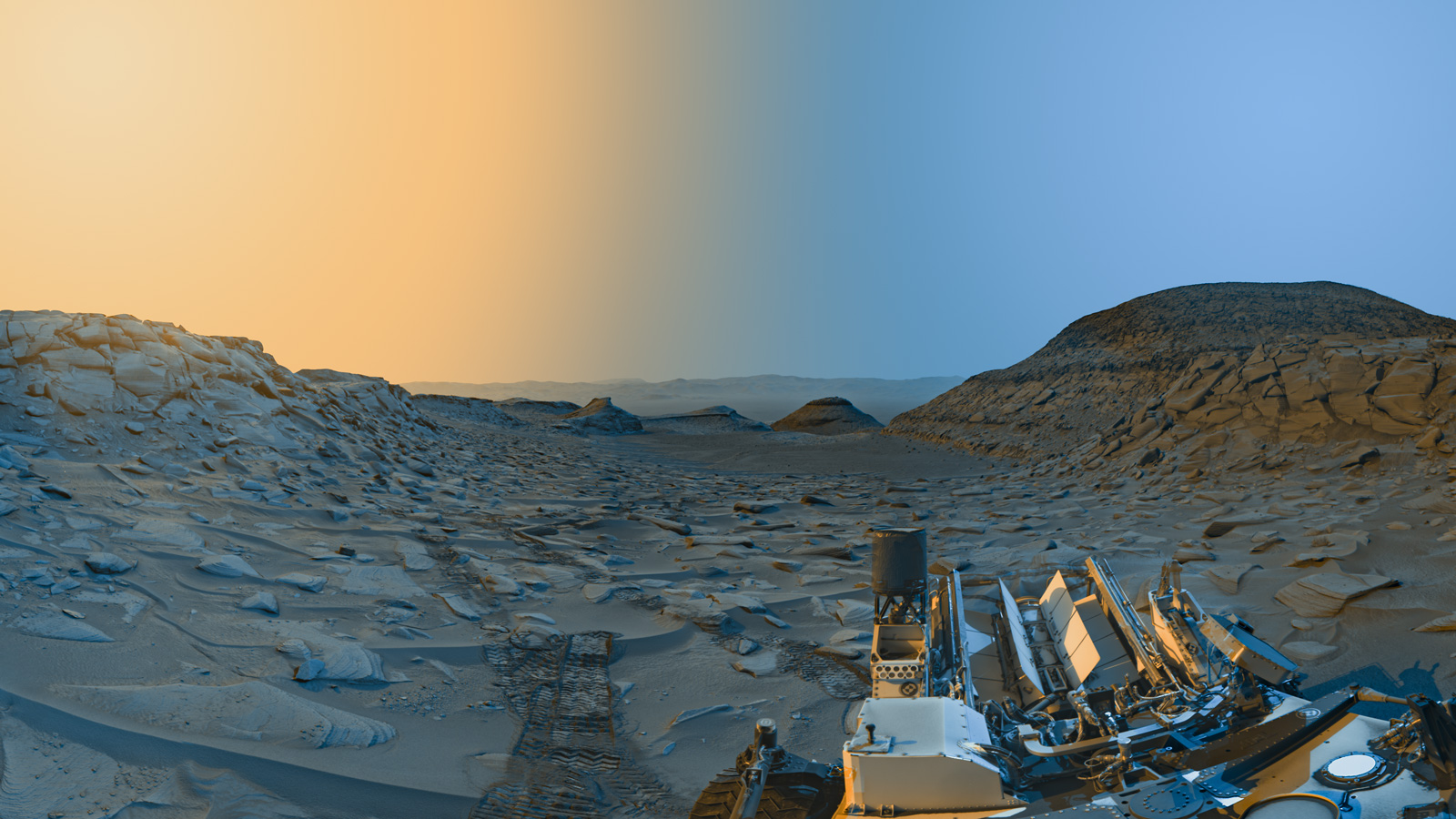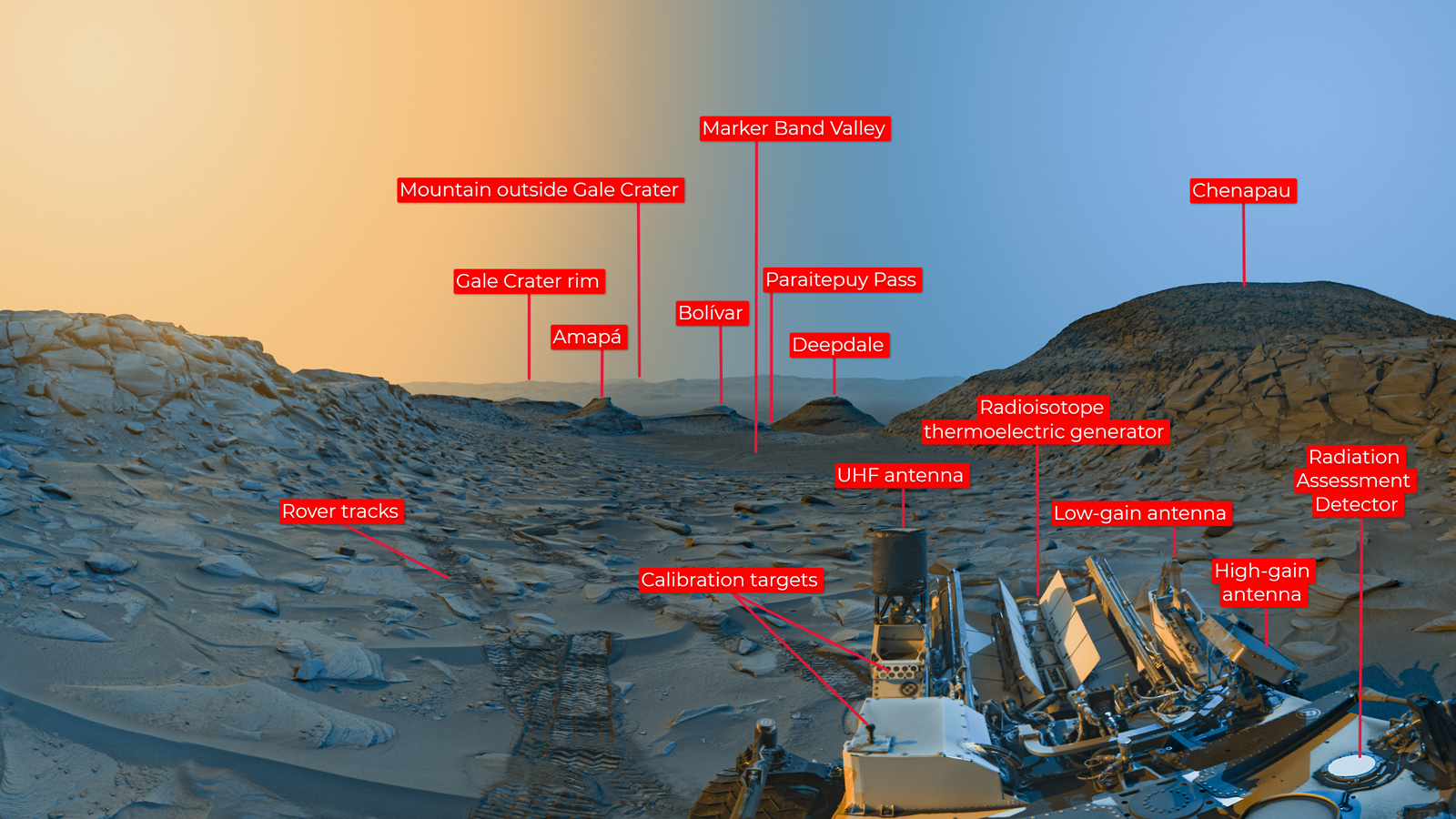After successfully updating its software in April 2023, NASA’s Curiosity rover made a “postcard” of the impressive colored landscape of the Marker Band Valley before continuing its journey.

This “postcard” is a real work of art created on the basis of two black-and-white panoramas taken by Curiosity navigation cameras. The images were taken on April 8 at different times of the day: 9:20 a.m. and 3:40 p.m. local Mars time. This made it possible to recreate the details of the landscape with different lighting. The morning part got blue, and the afternoon part — yellow. The same approach was used on the “postcard” taken by Curiosity in November 2021.
The resulting image is striking in its beauty. The rover is in the foothills of Mount Sharp, 5 kilometers high in Gale Crater, where it has been conducting research since its landing in 2012. In the background, behind the rover tracks, is the Marker Band Valley, where Curiosity has discovered unexpected signs of an ancient lake. At the bottom, in the center and slightly to the right, two hills Bolívar and Deepdale are visible, between which Curiosity explored an area called Paraitepuy Pass.

Engineer Doug Ellison of NASA’s Jet Propulsion Laboratory in Southern California, who processed the images, noted: “Anyone who’s been to a national park knows the scene looks different in the morning than it does in the afternoon. Capturing two times of day provides dark shadows because the lighting is coming in from the left and the right, like you might have on a stage.”
Especially impressive shadows in the image are emphasized by the fact that winter reigned at the time of the photo shoot on the Curiosity site. This season, the air on Mars contains less dust, so the picture turns out to be very clear.
The photo also shows the back of the rover, where you can see its three antennas and a nuclear battery. Special attention is drawn to the radiation measuring device, known as Radiation Assessment Detector (RAD), depicted as a white circle in the lower right corner of the image. This instrument helps scientists study how to protect the first astronauts to be sent to Mars from radiation on the planet’s surface.
Previously, we compiled a test for knowledge of interesting facts about Curiosity.
According to NASA
Follow us on Twitter to get the most interesting space news in time
https://twitter.com/ust_magazine

